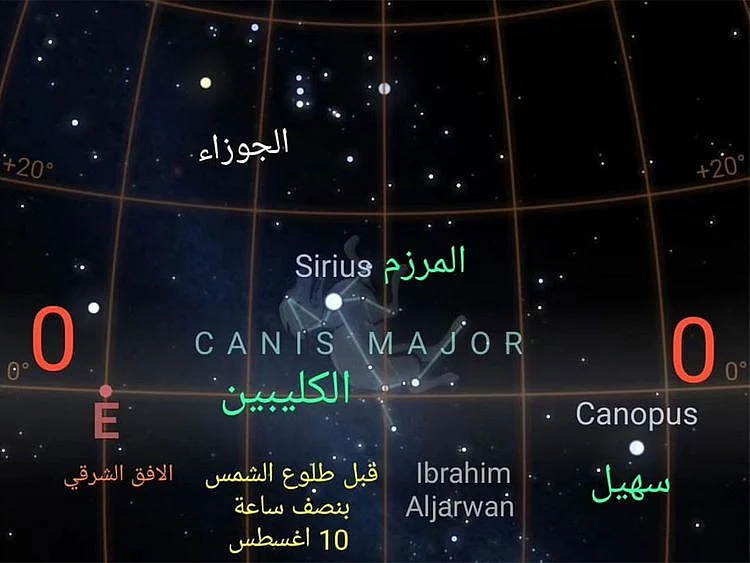Suhail star to mark the end of UAE's summer on August 24
In Emirati culture, appearance of the Suhail star marks a new season of fishing, farming.

Dubai: It’s almost time to say goodbye to summer – the stars have marked the onset of winter in the UAE.
The Suhail star, also known as Canopus, will rise on the horizon on August 24, marking a shift in weather in the Arabian Peninsula.
Ibrahim Al Jarwan, Chairman of the Emirates Astronomy Society and a member of the Arab Union for Astronomy and Space Sciences, confirmed the date in a recent tweet.
The star will appear in the early hours of twilight on August 24, over the southeastern horizon of the UAE and central Arabia, according to Al Jarwan.
Drop in temperature
Over many centuries, astronomers observed that the appearance of the Suhail star coincided with a fall in temperature by a few degrees.
An increase in humidity and strengthening of southeasterly winds, which tend to blow towards the Hajar Mountains in Oman and the east coast of the UAE, was also observed.
“With the rise of Suhail, several natural changes are evident. The intense heat of summer begins to wane, especially towards the end of the night. The ground, having cooled, retains more moisture, leading to increased humidity during nighttime. This period marks the optimal time to plant palm shoots,” the UAE astronomer wrote.
It also marks a time when fish return in large numbers to the coast as the temperature decreases over the sea, which means the fishing season will begin soon.
According to Al Sadeem Observatory’s website www.alsadeemastronomy.ae, in Emirati culture, the appearance of Suhail heralds a season of abundance, and “[Emirati] people from the past based their fishing, pearl hunting, and farming activities on it”.
What is the Suhail star?
The Suhail star is not too hard to spot – it is the second brightest star in the night sky after Sirius from the Canis Major constellation.
The star is 27 million years old and 310 light-years away from our planet.
Aside from helping early Arabs in telling the change of seasons, the star was also a reliable tool for navigation for ancient sailors and travelers.
Suhail will be visible until September 23, the day of the autumnal equinox, when the sun shines directly on the equator, and the northern and southern hemispheres get the same amount of rays. But after the autumnal equinox, the northern hemisphere of the Earth begins to tilt away from the sun, so nights will get longer and days will grow shorter until the winter solstice, which will be on December 21.
Aside from Canopus, the name Suhail has also been traditionally used on three other stars Gamma Velorum (al Suhail al Muhlif), a star in the southern constellation of Vela, Zeta Puppis (Suhail Hadar), and Lambda Velorum, which is now officially named Suhail by the International Astronomical Union. It used to be called Al Suhail al Wazn but was later shortened to just Suhail.
A mascot of the UAE space program
Remember the plush space-suit-clad stuffed toy that accompanied UAE astronauts Hazza Al Mansoori and Sultan Al Neyadi on their space mission to the International Space Station (ISS)?
'Suhail', the mascot of the United Arab Emirates (UAE) astronaut program was named after the Suhail star.
"Suhail is the Arabic name for the star Canopus. In the Middle East, we anticipate the appearance of Canopus because it marks the end of summer and the beginning of cool times," Sultan Al Neyadi had said as Suhail floated at the end of a tether aboard SpaceX's Dragon spacecraft ‘Endeavour’, on March 2.
Coming back to the weather. While evenings will become less warm, don’t get your warm clothes out yet.
According to the Al Sadeem Observatory: "The Earth has grown warmer, and weather experts only estimate a tiny drop in the temperature in the coming days. That is until the end of September — when Suhail will rise to mid-level of the night sky — when the weather will drastically be much more bearable."
Sign up for the Daily Briefing
Get the latest news and updates straight to your inbox
Network Links
GN StoreDownload our app
© Al Nisr Publishing LLC 2025. All rights reserved.